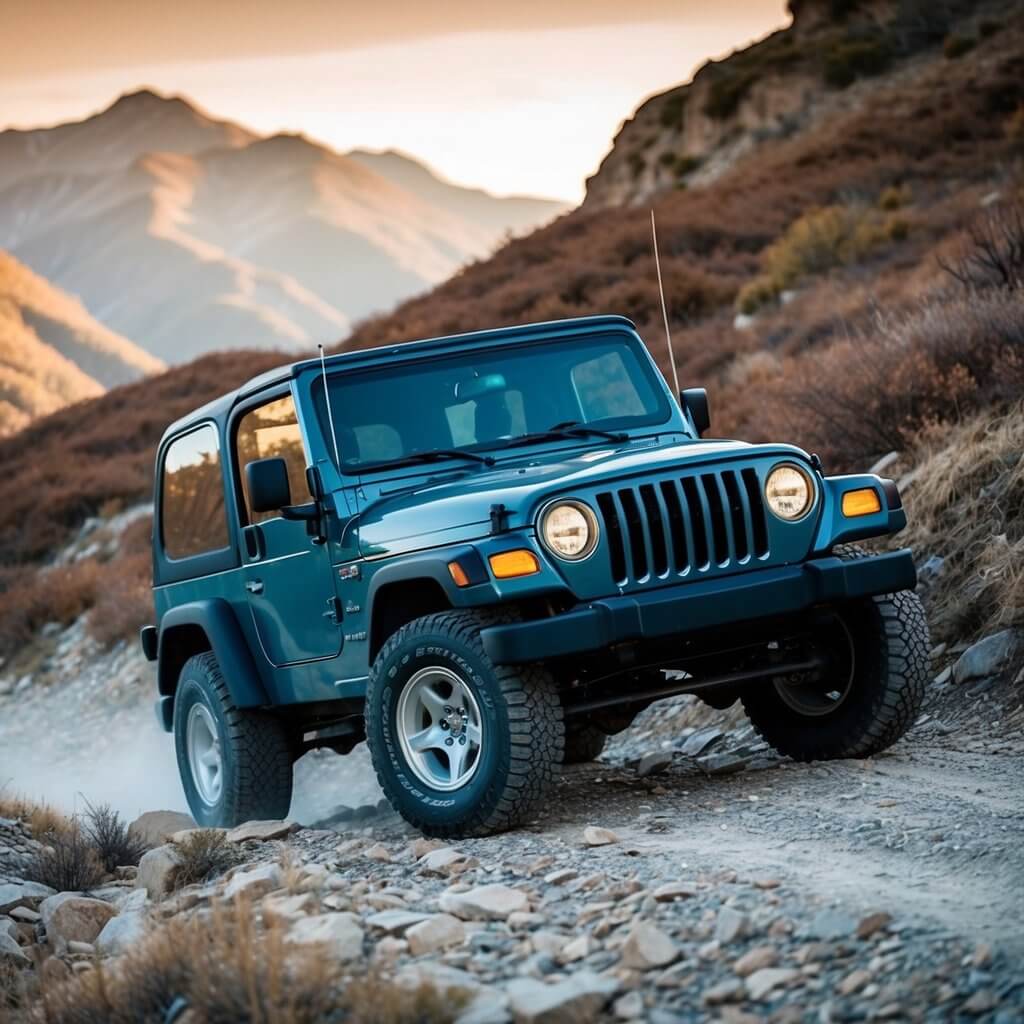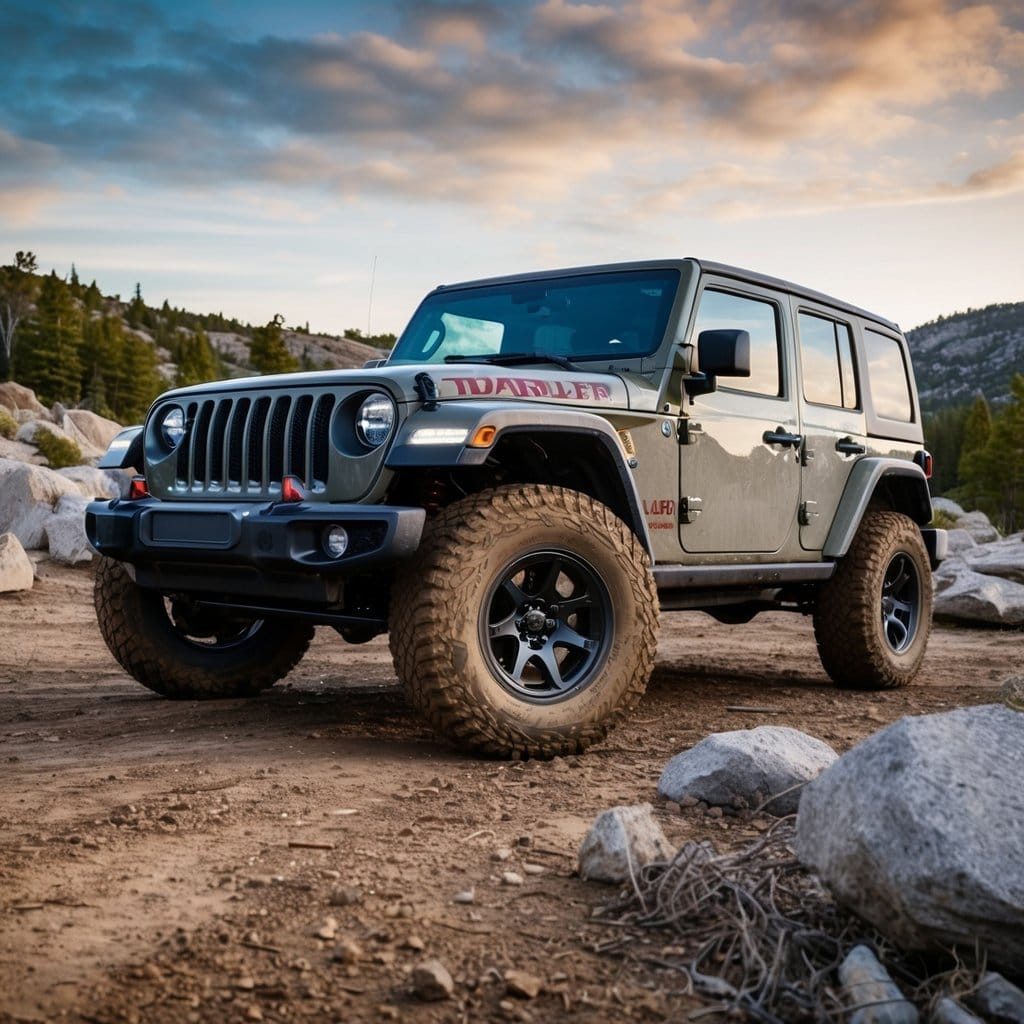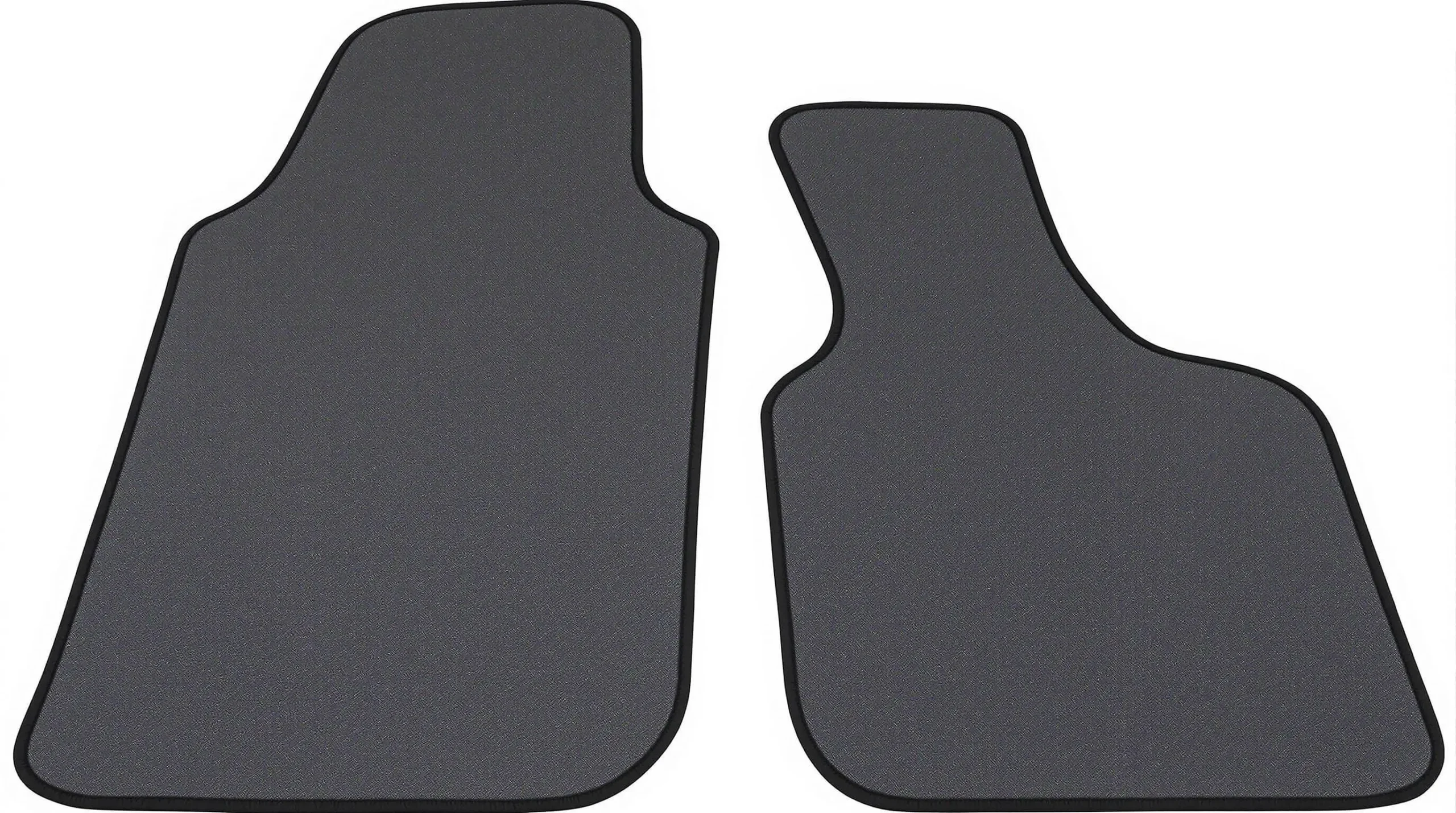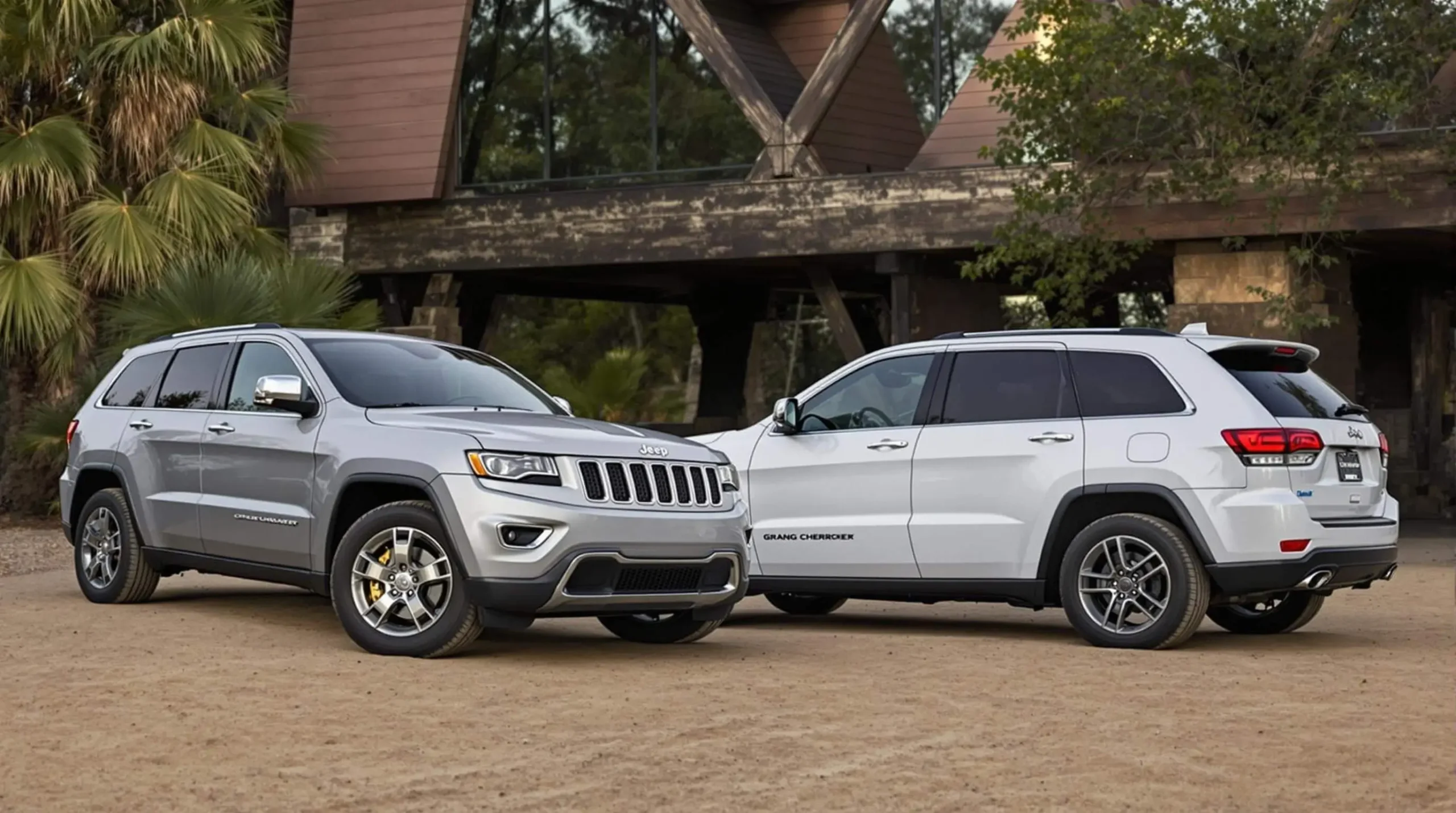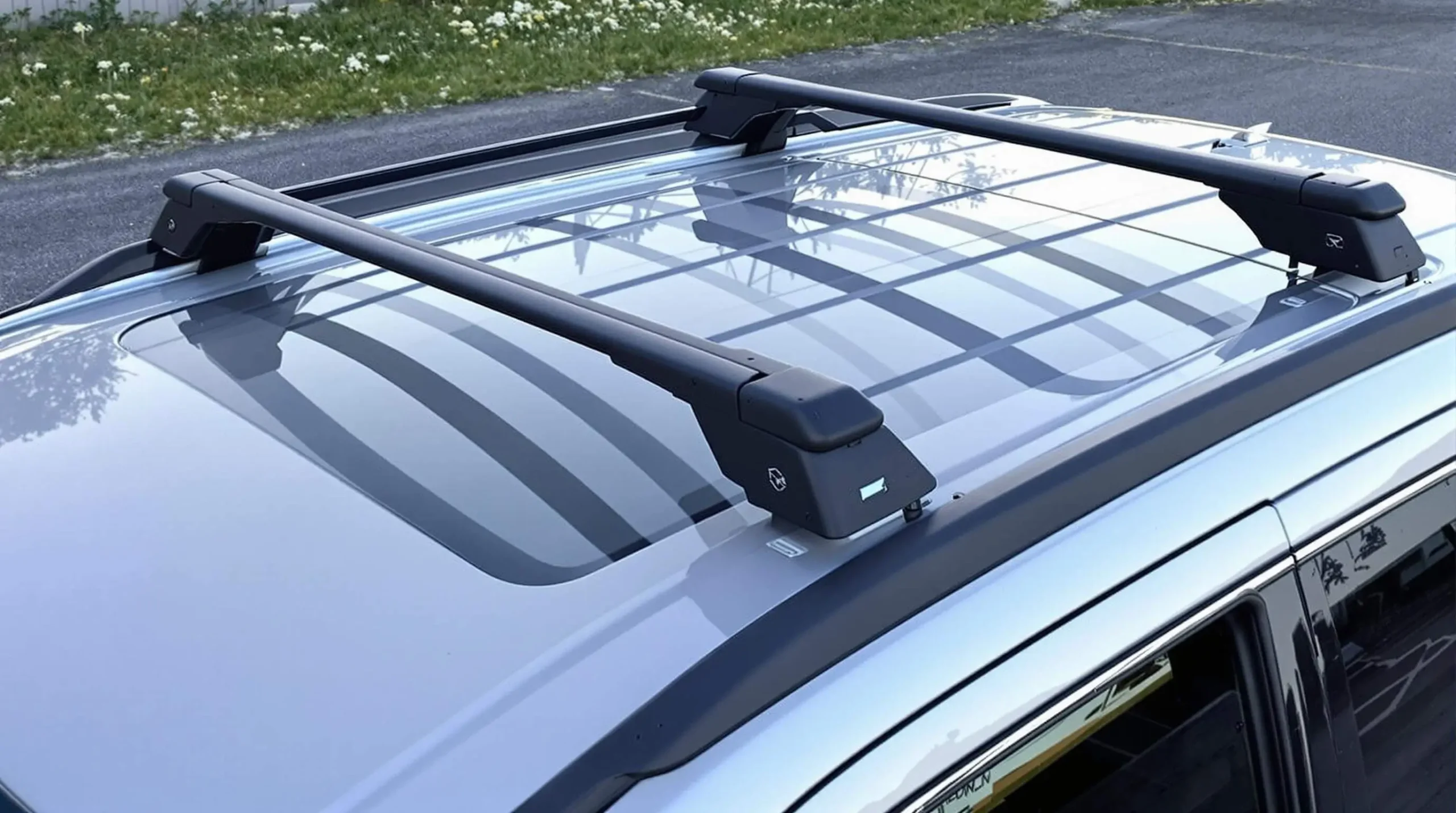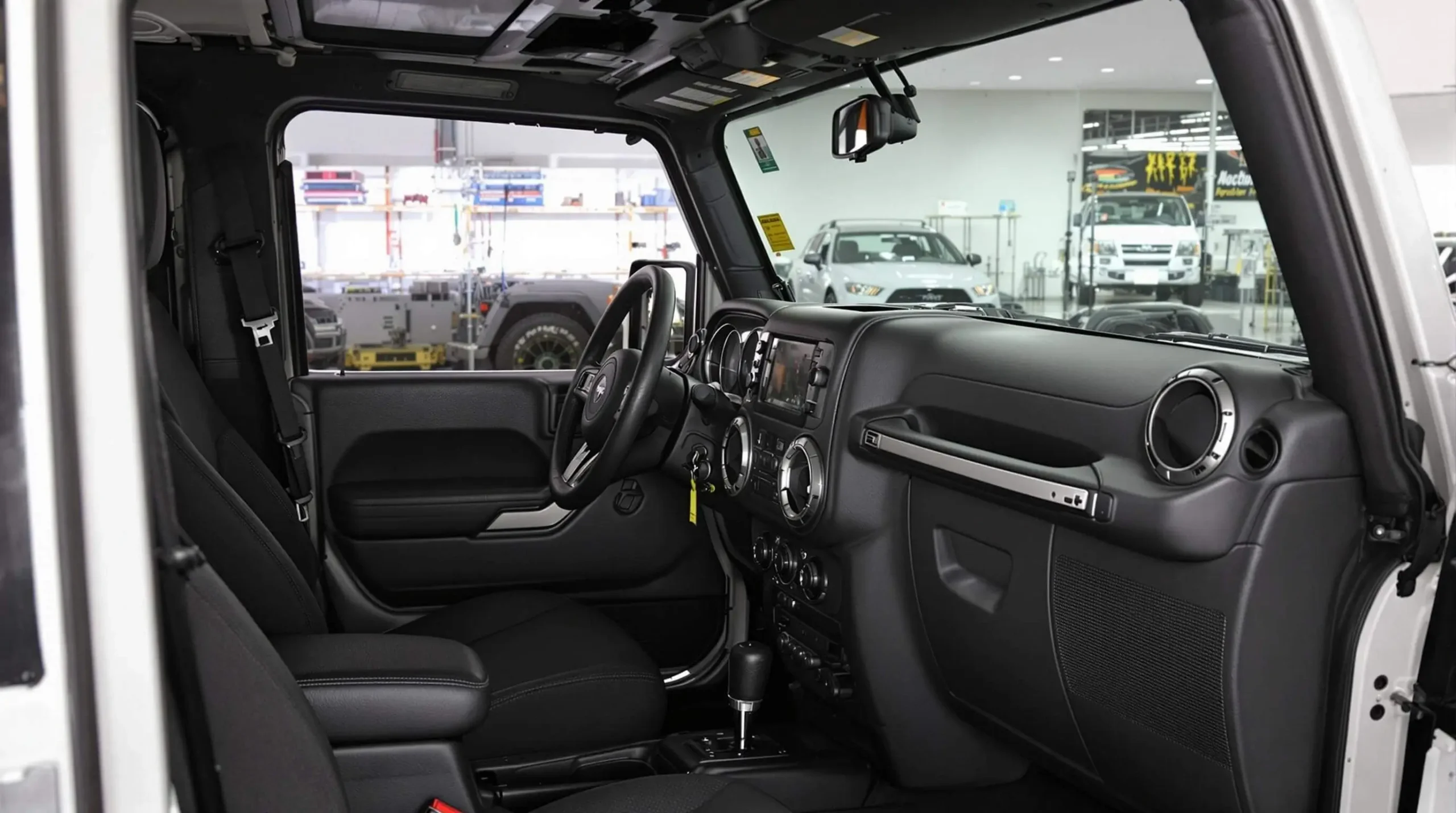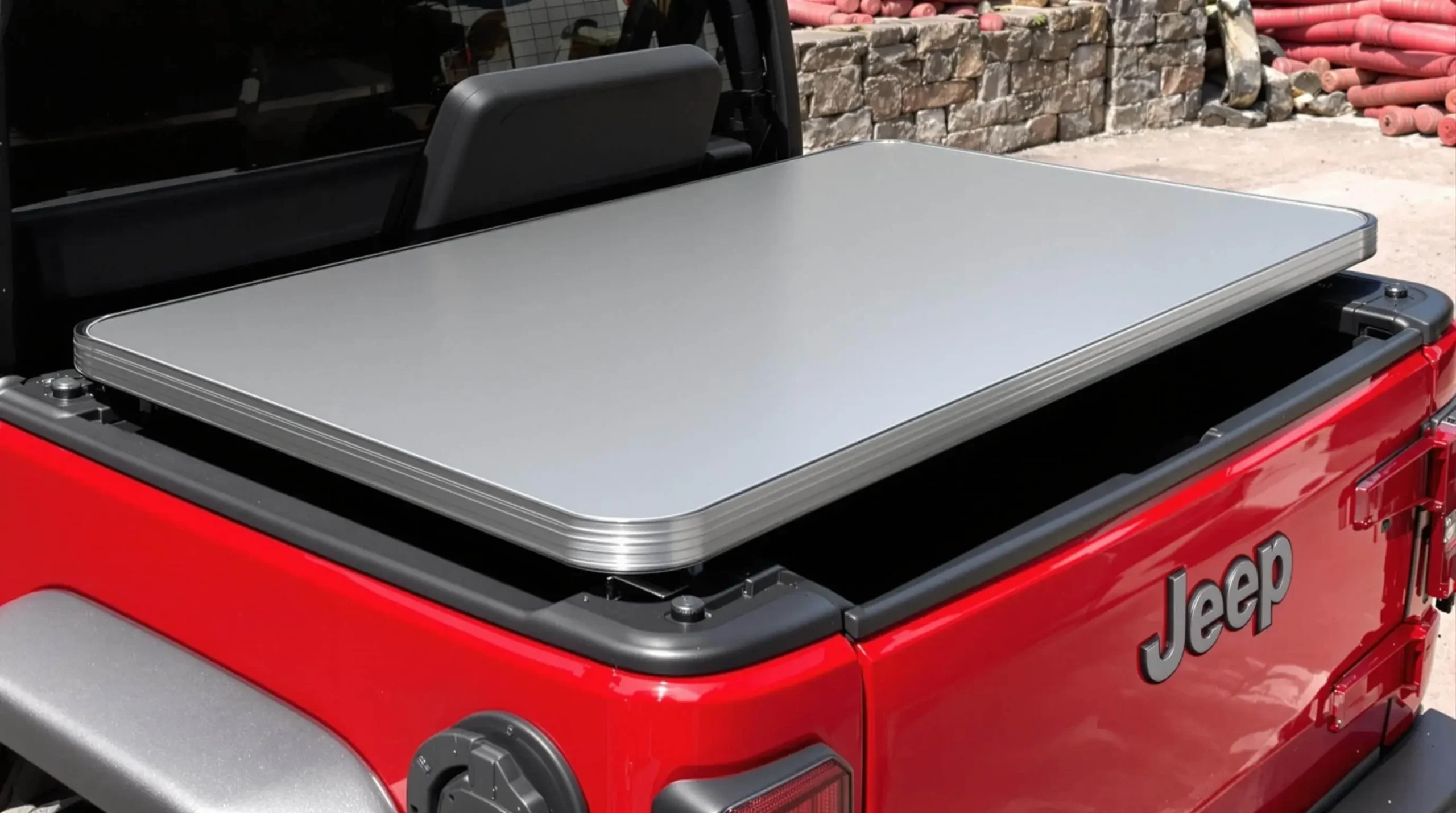Is It Expensive to Maintain a 2004 Jeep Wrangler? Real Costs Revealed
Have you ever fallen in love with a classic Jeep Wrangler but worried your wallet might not share your enthusiasm? The iconic 2004 Jeep Wrangler TJ represents a sweet spot for many off-road enthusiasts – modern enough to be practical, old enough to be affordable to purchase, but what about the maintenance costs?
If you’re considering buying this nearly 20-year-old off-road legend or already own one, understanding the true cost of keeping it running is essential. Is it expensive to maintain a 2004 Jeep Wrangler? The answer might surprise you.
Key Takeaways
| Maintenance Aspect | Average Annual Cost | DIY Savings Potential | Common Issues |
|---|---|---|---|
| Regular Maintenance | $800-$1,200 | 40-60% | Oil leaks, fluid services |
| Major Repairs | $1,500+ (varies) | 30-50% | Exhaust manifold cracks, suspension wear |
| Body & Interior | $200-$600 | 70-90% | Soft top wear, rust prevention |
| Overall Ownership | $1,000-$2,800/year | 35-65% | Age-related issues balanced by simple design |
Initial Query Semantics: Understanding Wrangler TJ Maintenance Costs
When people ask “is it expensive to maintain a 2004 Jeep Wrangler,” they’re really asking several questions: How do maintenance costs compare to other vehicles? What common repairs should I expect? Can I do the work myself? Is the TJ Wrangler still worth owning despite its age?
The 2004 Jeep Wrangler sits at an interesting crossroads – part of the beloved TJ generation (1997-2006) featuring the bulletproof 4.0L inline-six engine from AMC, yet old enough that wear-and-tear becomes an increasing concern. Let’s explore the real costs of keeping this off-road icon on (and off) the road.
Annual Maintenance Cost Overview
The 2004 Jeep Wrangler TJ typically costs between $1,000-$2,800 annually to maintain, depending on mileage, condition, usage patterns, and your willingness to tackle repairs yourself. This places it slightly higher than the average SUV maintenance cost of $800-$1,500 per year according to RepairPal, but lower than luxury 4x4s or newer JK/JL Wranglers with their more complex systems.
What makes the TJ unique is its maintenance profile: while certain components require regular attention, the vehicle’s relatively simple design keeps many repair costs manageable compared to modern vehicles packed with electronics and complex emissions systems.
According to data from Consumer Reports and actual owner experiences, TJ Wranglers with the 4.0L engine typically become more repair-intensive after crossing the 150,000-mile threshold – though with proper maintenance, these engines regularly surpass 250,000 miles. Following the recommended maintenance schedules from Kelley Blue Book is crucial for maximizing your Wrangler’s longevity and minimizing unexpected repairs.
When comparing a 2004 Wrangler to newer models, you’ll generally face more frequent repairs but lower costs per repair. The newer JK (2007-2018) and JL (2018+) Wranglers statistically require fewer repairs but can cost significantly more when they do need work.
Routine Maintenance Expenses
The bread and butter of keeping your 2004 Wrangler running smoothly is staying on top of regular maintenance. These routine services represent your best defense against costly major repairs down the road.
Fluid Maintenance Schedule and Costs
The 4.0L inline-six engine in the 2004 Wrangler requires regular oil changes every 3,000-5,000 miles, depending on your driving conditions. Using conventional 5W-30 oil will cost $40-$60 at a shop, or $25-$35 if you do it yourself. Synthetic oil increases these costs by about 40% but can extend change intervals and provide better protection.
Other critical fluids require less frequent attention but are equally important:
- Transmission fluid (manual or automatic): $120-$200 every 30,000-60,000 miles
- Transfer case fluid: $100-$150 every 30,000 miles
- Differential fluid (front and rear): $150-$250 every 30,000 miles
- Coolant: $100-$150 every 30,000-60,000 miles
- Brake fluid: $60-$100 every 2 years
- Power steering fluid: $60-$80 every 60,000 miles
Off-road use significantly impacts these intervals – muddy water crossings, dusty trails, and technical driving can all necessitate more frequent fluid changes. The differential fluids are particularly critical after water crossings to prevent expensive repairs.
Filter and Component Replacements
Regular replacement of filters and wear components keeps your TJ running efficiently:
- Air filter: $15-$40 every 15,000-30,000 miles
- Fuel filter: $80-$120 every 30,000 miles
- Spark plugs: $60-$120 every 30,000-60,000 miles
- Serpentine belt: $100-$150 every 60,000-90,000 miles
- Distributor cap/rotor: $50-$100 every 60,000 miles
The good news? Most of these jobs are straightforward DIY projects on the 2004 Wrangler. The engine bay offers excellent access, and the 4.0L’s simple design means you won’t need specialized diagnostic equipment for basic maintenance.
For example, changing the air filter on a TJ takes about 5 minutes with basic hand tools and costs about $15 for a quality filter. The same job at a shop might cost $40-$60 with labor. These DIY-friendly characteristics are a major reason why many TJ owners report lower real-world maintenance costs than statistics suggest.
Brake System Maintenance
Brake components on a 2004 Wrangler typically include:
- Front brake pads: $150-$250 every 30,000-50,000 miles
- Rear brake shoes/pads: $150-$250 every 40,000-60,000 miles
- Rotors/drums: $300-$500 every 60,000-90,000 miles
- Calipers: $400-$600 if they develop leaks or seize
Larger tires, off-road use, and towing all accelerate brake wear. However, the TJ’s relatively simple brake system makes this another area where DIY maintenance can yield significant savings – a complete front brake job (pads and rotors) might cost $500 at a shop but only $150-$200 in parts.
Tire Maintenance and Replacement
The 2004 Wrangler came with relatively modest 15″ or 16″ wheels and tires from the factory, but many owners upgrade to larger sizes for better off-road capability. Stock replacement tires typically cost $600-$800 for a set of four quality all-terrains, while upgraded off-road tires can easily exceed $1,000-$1,500.
Tire rotation costs around $30-$60 professionally or can be done at home with basic tools. Alignment services run $80-$150 and become crucial after suspension modifications or if you experience uneven tire wear.
Many TJ owners report getting 40,000-50,000 miles from quality all-terrain tires with regular rotation and proper inflation – significantly better than newer, heavier Wranglers that often see tire life in the 30,000-mile range.
Major System Maintenance and Repair Costs
While routine maintenance keeps most systems running smoothly, every vehicle eventually needs more significant repairs. For a 2004 Wrangler, these typically begin appearing after 100,000-150,000 miles or 10-15 years, depending on care and conditions.
4.0L Engine Reliability and Repairs
The AMC 4.0L inline-six engine is legendary for its durability, with many examples exceeding 250,000 miles with basic maintenance. However, age-related issues do emerge:
- Valve cover gasket leaks: $150-$300
- Oil pan gasket leaks: $350-$600
- Rear main seal leaks: $600-$1,000
- Exhaust manifold cracks: $500-$800
- Water pump replacement: $300-$500
- Radiator replacement: $350-$600
- Head gasket (uncommon but possible): $1,200-$1,800
These issues typically develop gradually, allowing you to plan repairs rather than face emergency breakdowns. The 4.0L’s robust design also means that most engine problems don’t cascade into catastrophic failures – a luxury not shared by many modern turbocharged engines.
According to a survey of TJ Wrangler owners on JeepForum.com, the most common significant engine expense is addressing exhaust manifold cracks, which typically appear between 120,000-180,000 miles.
Transmission and Transfer Case Maintenance
The 2004 Wrangler came with either a 5-speed manual (NV3550) or a 4-speed automatic (42RLE), paired with the bombproof NP231 transfer case. Reliability varies by transmission:
- Manual transmission clutch replacement: $700-$1,200 every 100,000-150,000 miles
- Automatic transmission service/minor repairs: $400-$800 every 60,000-100,000 miles
- Automatic transmission rebuild (if needed): $1,800-$3,000
- Transfer case chain/bearing service: $300-$600 every 100,000-150,000 miles
Manual transmissions typically cost less to maintain over the vehicle’s lifetime. The NV3550 in particular is known for its durability when not abused. The automatic, while convenient, requires more frequent service and can be expensive if a full rebuild becomes necessary.
The transfer case is remarkably robust, with most issues stemming from lack of fluid maintenance or extreme off-road use. Budget for a chain and bearing refresh around 150,000 miles ($300-$600) to prevent more expensive repairs.
Suspension and Steering Maintenance
The TJ Wrangler’s suspension and steering components face significant stress, especially with off-road use. Common replacement items include:
- Shocks: $300-$500 every 50,000-80,000 miles
- Track bar: $150-$300 every 80,000-120,000 miles
- Ball joints: $400-$700 every 100,000-150,000 miles
- Control arm bushings: $300-$600 every 100,000 miles
- Steering stabilizer: $100-$200 every 60,000-100,000 miles
- Steering box rebuild/replacement: $500-$800 if it develops leaks
The dreaded “death wobble” – a violent front-end vibration – can appear in TJs with worn steering or suspension components. Fixing this condition typically costs $500-$1,000 depending on which parts need replacement.
Upgrading to quality aftermarket components when replacing wear items can improve durability and performance. Many TJ enthusiasts recommend brands like Bilstein, Moog, and Currie for longer-lasting replacements than stock components.
Electrical System Reliability
The 2004 Wrangler’s electrical system is refreshingly simple compared to modern vehicles, but 18+ years of heat cycles, vibration, and possibly moisture exposure can cause issues:
- Alternator replacement: $350-$500
- Starter replacement: $350-$500
- Battery: $120-$200 every 3-5 years
- Ignition switch: $150-$300
- Sensors (oxygen, crank position, etc.): $100-$300 each
- Instrument cluster repairs: $200-$500
The TJ’s relatively simple electrical architecture makes diagnosis more straightforward than in newer vehicles. Many electrical issues stem from ground points corroding – a free fix if you can locate the problem yourself.
For a well-maintained 2004 Wrangler, electrical system issues typically represent only about 10-15% of total maintenance costs according to data from RepairPal and owner forums.
Body and Interior Maintenance Expenses
The TJ Wrangler’s body and interior components require specific attention different from typical vehicles, particularly regarding tops and rust prevention.
A soft top typically lasts 5-10 years before requiring replacement ($800-$1,500 for quality replacements like Bestop). Maintaining the top with proper cleaners and protectants ($50-$100 annually) can substantially extend its lifespan. Zipper lubricant and window polish ($20-$30) help prevent common wear points.
Hard tops are more durable but can develop seal leaks and require periodic gasket replacement ($100-$200 every 5+ years). The freedom panels on factory hard tops sometimes develop stress cracks that can be repaired for $150-$300.
Rust prevention represents the most crucial body maintenance for a TJ Wrangler. Annual undercarriage cleaning and protection ($150-$300 professionally or $50-$100 DIY) can prevent thousands in rust-related repairs. The frame, floor pans, and rear corner body mounts deserve special attention.
Interior components are generally durable, with seat covers ($150-$300) providing affordable protection for worn upholstery. Carpet replacement runs $300-$500 but many owners opt for spray-in bedliner material ($400-$800) for a more durable, waterproof interior.
DIY vs. Professional Service Cost Analysis
The 2004 Wrangler’s straightforward design makes it an excellent platform for DIY maintenance, with potential savings of 35-65% compared to shop rates. Here’s a breakdown of tasks by difficulty:
Beginner-friendly DIY tasks (savings of 50-70%):
- Oil and filter changes
- Air filter replacement
- Fluid checks and top-offs
- Battery replacement
- Basic bulb replacements
- Tire rotations
Intermediate DIY tasks (savings of 40-60%):
- Brake pad/shoe replacement
- Spark plug replacement
- Fluid changes (transmission, differentials, etc.)
- Shock replacement
- Serpentine belt replacement
- Starter/alternator replacement
Advanced DIY tasks (savings of 30-50%):
- Ball joint replacement
- Control arm bushing replacement
- Steering component replacement
- Exhaust manifold repair
- Clutch replacement
- Differential rebuilds
Basic hand tools will handle most maintenance tasks, though some special tools like a quality floor jack, jack stands, and specific sockets for drain plugs make jobs easier. A one-time investment of $200-$500 in quality tools can pay for itself many times over during your ownership experience.
Resources like the different Jeep Wrangler models guide and the factory service manual (available as a PDF online) provide detailed instructions for most repairs. YouTube channels dedicated to TJ maintenance offer visual guidance that makes complex jobs more approachable.
According to a survey on Wrangler forums, regular DIYers report annual maintenance costs averaging $800-$1,200 versus $1,500-$2,800 for those who rely primarily on professional service – a potential lifetime savings of $10,000+ over extended ownership.
Factors Affecting Individual Maintenance Costs
Your actual maintenance costs for a 2004 Wrangler will vary significantly based on several factors:
1. Driving Environment and Conditions
Daily drivers in mild climates typically see the lowest maintenance costs. According to data from CarFax and owner reports, Wranglers in extreme environments face specific challenges:
- Salt-belt regions: 30-40% higher body/frame maintenance costs due to rust
- Desert regions: 20-30% higher cooling system costs due to heat stress
- Heavy off-road use: 40-60% higher drivetrain and suspension maintenance
2. Previous Maintenance History
A well-maintained TJ with complete service records might cost 40-50% less to maintain than one with deferred maintenance. The first year of ownership after purchasing a neglected example often sees the highest expenses as you catch up on overdue services.
Looking at maintenance records from CarCare, vehicles with regular documented maintenance generally require 60% fewer unexpected repairs than those with spotty histories.
3. Modifications and Their Impact
Modifications significantly affect maintenance costs:
- Lift kits: Increase ball joint and steering component wear by 30-50%
- Larger tires: Accelerate drivetrain wear by 20-40% depending on size
- Engine modifications: Can double the frequency of related component failures
- Winches/heavy bumpers: Increase front-end component wear by 15-30%
However, quality modifications installed correctly can actually improve reliability in certain areas. For example, a good suspension upgrade often incorporates higher-quality components than stock.
4. Parts Selection Strategy
The parts you choose dramatically impact long-term costs:
- Budget parts: Lowest initial cost but typically last 40-60% as long as quality alternatives
- OEM parts: Moderate cost with factory-equivalent durability
- Premium aftermarket: Highest initial cost but often 30-50% longer lifespan and improved performance
According to analysis of owner reports on Jeep forums, spending 30% more on quality parts typically results in components lasting 50-100% longer – a net savings over time.
Long-Term Ownership Economics
The 2004 Wrangler presents an interesting long-term value proposition. Unlike most vehicles that depreciate continuously, TJ Wranglers have largely bottomed out in value and have begun appreciating for well-maintained examples.
According to Hagerty valuation data and market analysis from NADA Guides, clean 2004 Wranglers have appreciated approximately 10-15% in the past five years – a trend expected to continue as they transition toward “classic” status.
This appreciation helps offset maintenance costs in a way few other 18-year-old vehicles can match. A $2,000 annual maintenance budget represents only 15-20% of a typical TJ’s current market value – comparable to the maintenance-to-value ratio of much newer vehicles.
When calculated as cost-per-mile, a well-maintained 2004 Wrangler typically costs $0.25-$0.35 per mile in maintenance – higher than some economy cars but significantly lower than most new 4x4s or luxury vehicles.
The “sweet spot” for TJ ownership value appears to be purchasing a well-maintained example with 80,000-120,000 miles, investing in preventative maintenance, and enjoying 5-10 years of relatively predictable costs while the vehicle maintains or increases its value.
Conclusion: The True Cost of 2004 Jeep Wrangler Maintenance
So, is it expensive to maintain a 2004 Jeep Wrangler? The honest answer is: it depends on your perspective and how you approach ownership.
By pure numbers, the TJ costs more to maintain than many conventional vehicles of similar age – with annual expenses typically running $1,000-$2,800. However, this simplistic view misses several critical factors:
- The vehicle’s capability and character are unmatched by most “cheaper-to-maintain” alternatives
- Its simplicity makes DIY maintenance accessible, potentially cutting costs by 35-65%
- Strong parts availability keeps costs reasonable despite its age
- Value retention/appreciation offsets maintenance costs in the total ownership equation
For the budget-conscious enthusiast, a well-maintained 2004 Wrangler with the legendary 4.0L engine strikes an excellent balance between affordable purchase price, manageable maintenance, and the authentic Jeep experience. The key is budgeting realistically, addressing small issues before they become major expenses, and leveraging the vehicle’s DIY-friendly design.
As one long-time TJ owner aptly summarized on a popular Jeep forum: “They’re not the cheapest vehicles to keep on the road, but when you calculate the smiles-per-dollar, nothing else comes close.”
Frequently Asked Questions
What is the most expensive common repair on a 2004 Jeep Wrangler?
The most expensive common repair is typically an automatic transmission rebuild ($1,800-$3,000) if needed. However, this is relatively uncommon with proper maintenance. More frequently, owners face exhaust manifold repairs ($500-$800) or significant suspension refreshes ($800-$1,500) as their largest single expenses.
How does the maintenance cost of a 2004 Wrangler compare to newer Jeep models?
The 2004 Wrangler typically requires more frequent but less expensive repairs compared to newer models. Annual maintenance costs average 15-25% less than JK Wranglers (2007-2018) and 30-40% less than current JL models, primarily due to the TJ’s simpler mechanical systems and lack of complex electronics.
Can I daily drive a 2004 Wrangler without breaking the bank?
Yes, with proper maintenance. Daily drivers typically budget $1,500-$2,000 annually for maintenance and repairs, with costs skewing higher in extreme climates or with heavy traffic. The key is addressing small issues before they cascade into larger problems.
What tools do I need to maintain a 2004 Wrangler myself?
A basic tool set ($200-$300) will handle 70-80% of maintenance tasks. This should include metric sockets and wrenches, screwdrivers, pliers, a quality floor jack and jack stands, oil filter wrench, and basic electrical tools. Special tools for specific jobs can often be borrowed from auto parts stores with tool loan programs.
At what mileage do 2004 Wranglers start having serious problems?
With proper maintenance, the 4.0L engine and drivetrain remain reliable well beyond 200,000 miles. Most owners report increased maintenance needs starting around 150,000 miles, particularly with suspension components and minor engine seals. Catastrophic failures are uncommon even at high mileage when preventative maintenance is performed.
Would a 2004 Rubicon cost more to maintain than other Wrangler trims?
The Rubicon package adds complexity with its locking differentials, transfer case with 4:1 low range, and Dana 44 axles. However, these components are actually more durable than standard TJ parts. Maintenance costs typically run only 5-10% higher for Rubicons, but parts availability might be more limited for some specialized components.

